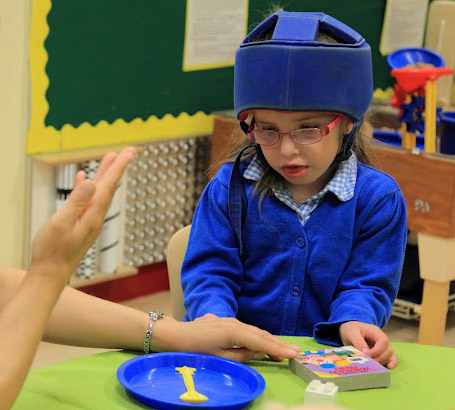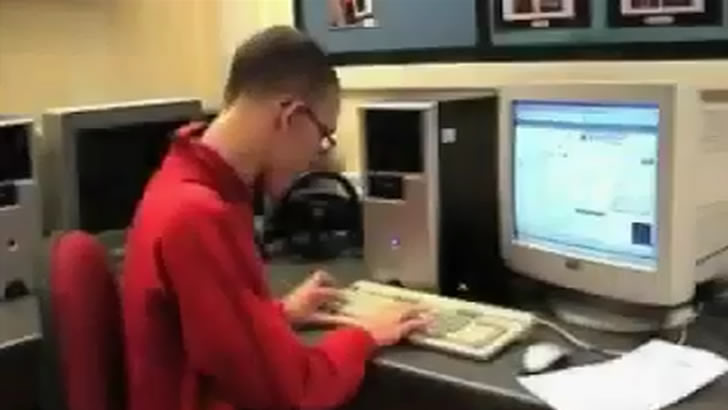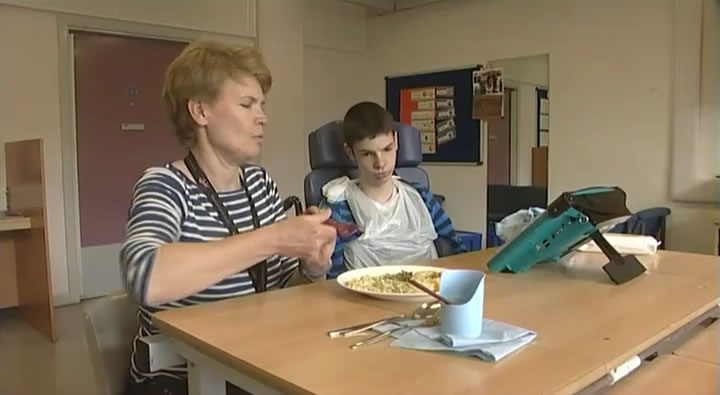

It is only because [the child] is treated as a communicator
that [s/he] learns the essential art of communication.
Newson, 1978
A child with learning difficulties may find it very hard to communicate, so it is important to learn some strategies to help overcome barriers.
Think about a time when you found it hard to make yourself understood (eg when speaking to a native-speaker on a holiday abroad).
- What did you do to help make yourself understood? What encouraged you to keep trying?
Watch the video extract of 'Our Favourite Things'.
- As you view the clip, what helps you to understand what the young people are trying to communicate?

Introducing 'pivot words' can empower the child to have early control in situations, eg by making requests for a situation to continue by using 'more' or 'again'.
Pivot words can also enable children to combine ideas, eg 'brick gone'.
Watch this video in which a child with PMLD uses a pivot word 'more' on a switch to control when and if his carer gives him his next spoonful of dinner.
Click on each of the following for some ideas on how to encourage communication.
Get to know the child and what they can do. See the world through their eyes. Be aware of what they like and dislike and
use their interests as the basis for developing a shared interaction. Make sure everyone working with the child shares this
understanding.
 Return
Return
React to what the child does. Don't keep talking to or at the child, naming objects, commenting on the child's movements
and actions. Instead, be a part of the experience and look for cues from the child. Make sure that the experience is an active
rather than passive one for the child.
 Return
Return
Let the child take the lead. Guiding without leading is a skill that takes time to develop. Know when to stand back and
watch.
 Return
Return
Try to recognise when a child is communicating and respond appropriately. If you do, the child will begin to appreciate
the power of language. If a child's attempts to communicate are misunderstood repeatedly, they are likely to give up and withdraw.
 Return
Return
Don't impose your own personality.
Start from where the child is, eg respond to the child reflecting the same mood and at the same volume.
 Return
Return
If the child has a routine, stick to it. A child will become familiar with the communication associated with care activities,
eg holding out an arm for their coat to be put on, and will anticipate actions and respond appropriately.
 Return
Return
It takes a child with learning difficulties longer to understand and to respond. By allowing for this, the child will gain
confidence and realise that they can influence what happens next. Repeating the same activities will encourage anticipation
and recognition.
 Return
Return
Make interaction part of daily life. Encourage communication at all times. Don't associate it with or confine it to particular
activities.
 Return
Return
Although you shouldn't ignore weaknesses – these are important areas for development – build mainly on children's
strengths to give them confidence and motivation.
 Return
Return
Recognise when the child has had enough. There is no point in persisting if the child has lost motivation. Try to recognise
the warning signs and stop at a high point, rather than when the child has lost interest.
 Return
Return
Careful attention is needed in group situations.
Consider the size of the group. If a child in the group has a sensory or physical impairment, make sure they are sitting in
an appropriate position within the group. Give the child enough time to respond.
 Return
Return
Carefully move from one activity to the next to help the child to anticipate change.
The child needs to be able to anticipate events. Bear in mind that a child can be confused by sudden changes of activities.
A daily routine can help reduce confusion and anxiety over a change.
 Return
Return
Evaluate what you do as well as how the child responds.
Realising what you did well and less well will help both you and the child to communicate better in the future.
 Return
Return
Get to know
the child
Let the child direct
Guide don't lead
Be observant
Don't impose
Routine
Be patient
Interact
Be positive
Recognise
Group situations
Help the child
anticipate
Evaluate

